How do you classify a medical condition or any kind of illness? Does it necessarily have to have a physical impact or any effect that is visible to others? The deadliest diseases in fact creep throughout the body without even alerting their host, and most of them internally destroy you, while the majority of people keep tagging your conflict as a culmination of small problems or habits you don’t want to get rid of. Movies always try to stick to reality, some adventurous pieces may have a foot submerged in realism whereas others have the tip of their toes, but it would make no sense if one was to present anything that could only be comprehended by their own mind (which is impossible by the way).
Hence, from the beginning of the silent picture, we’ve had various medical conditions portrayed on screen, intentionally or unintentionally. The fantastic delusions and dreams of the human mind were interesting to look at, but with the advancement of technology they’ve been associated with wide-ranging psychological issues (doesn’t mean everyone who lures absurdity into their vision is unwell). In most cases these medical conditions have rightfully been portrayed to make audiences face the horrors of truth, and as Alfred Hitchcock says, truth sometimes is stranger than any kind of fiction.
I’ll be dissecting certain movies and embalming your minds to hold onto these depictions of disorders in movies, mental or physical. Also, please note it’s pointless to classify horror as a genre, hence I’ll be looking at movies that intend on leaving you rattled and are successful at that. So here is the list of top movies based on medical conditions. The list includes medical horror movies and medical comedy movies.
12. Awakenings (Encephalitis Lethargica)
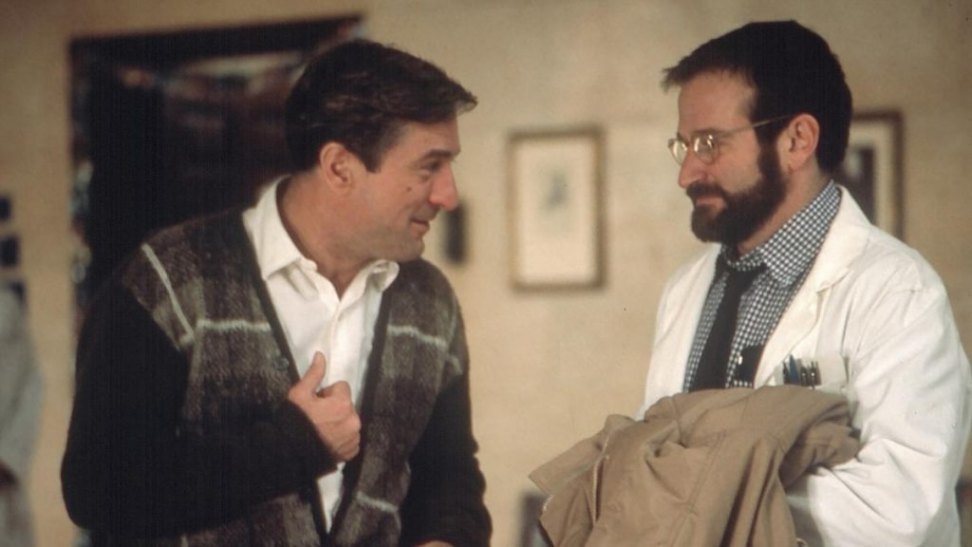
One of the most criminally underrated movies of the 90s, ‘Awakenings’ is a film that has the power to move you. Featuring two of the greatest actors of all time, Robin Williams and Robert De Niro, the film tells the story of a doctor who miraculously discovers the cure for an epidemic and manages to awaken patients in his hospital who are survivors of the horrific 1917-28 epidemic of encephalitis lethargica. This causes immense joy to the family members of the patients, as the patients begin to experience life once again, several decades after they went into a state of catatonia. Williams plays the doctor while De Niro plays one of the patients, named Leonard Lowe. We see the film through Leonard’s eyes as he experiences some of the most profound human emotions after being ”brought back into life.”
For some people, the film’s schmaltzy tone might be a put-off, but it’s wonderful that the movie made a lot of viewers read about the true story behind it and appreciate the genuine efforts of the doctors. It’s beautifully written and acted and features some of the most heartbreaking moments you’ll ever see in cinema. The scene where De Niro meets his girlfriend for one last time before falling back into his catatonic state is beyond words. Both De Niro and Williams are unbelievably good in the film. Williams adopts a more subtle, restrained approach that greatly benefits the film. Watch it for its beautiful, heartbreaking story and the unforgettable performances by the two leading legendary actors.
11. Memento (Anterograde Amnesia)
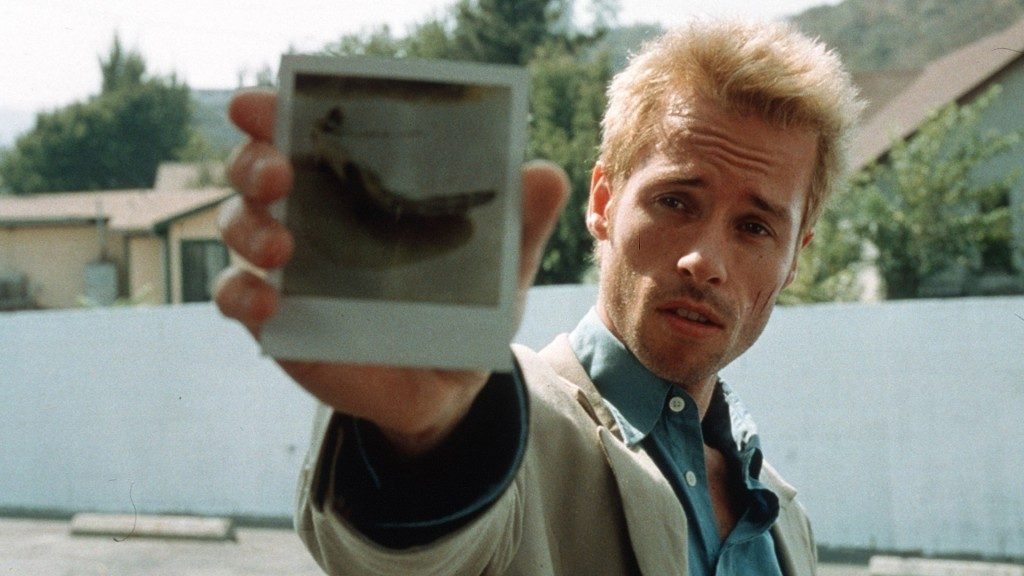
Of course, this Christopher Nolan indie classic had to be mentioned on this list. I mean, seriously, how many of you had even heard of Anterograde Amnesia before watching the film? People who suffer from this devastating medical condition do not have the ability to create new memories after the event that caused amnesia. This peculiar mental illness forms the crux of the story here. Protagonist Leonard Shelby’s wife was raped while he was clubbed by another man, whose identity remains unknown. Post the attack, Leonard suffers from Anterograde Amnesia, but he’s hellbent on finding the man responsible for the death of his wife. He notes down crucial points and uses clues from the tattoos on his body to track down the killer.
The most striking aspect of the film is how it manages to put the viewer into the head of the protagonist. The non-linear structure involves black-and-white sequences that go forward, chronologically, while the color sequences are put together in reverse chronology. Both sequences meet at the end, resulting in the climax of the film. This structure is very effective as the viewer is denied crucial information, just like the protagonist. Though it may take time to comprehend the events of the story, once you manage to figure out the arrangement of the sequence, the film becomes very clear. Nolan may have gone on to make more ambitious films later in his career, but ‘Memento’ remains his most clinical, intelligent work.
10. It Follows (STDs)

Though not being an official metaphor for the horror concerning Sexually Transmitted Diseases (STDs), one doesn’t have to think a lot while arriving at this interpretation. Though director David Robert Mitchell has done a solid job in conjuring a dream world, it does borrow more than just the minimalist style from early slasher films and also includes the underlying commentary regarding the sexual revolution. The origin of “It” hasn’t been explored, and since it takes the form of humans while spreading through sexual intercourse, it delivers a strong statement about the vulnerability regarding unprotected sex, especially in teenagers who are at a mentally vulnerable stage.
9. White Dog (Racism)
I believe extreme racism is a medical condition (proof here), and note that medical conditions also include mental inconsistencies. Only a mentally unfit person indulges in the racism, and this is,, fortunately,, a curable condition. ‘White Dog’ by legendary low-budget film director Samuel Fuller portrays the ill effects of racism by physically embodying it in the form of a vicious dog that is trained to attack black people. Though it may suffer from B-grade production values, it’s a chilling experience, and Fuller lends it an unhinged savageness that many movies refrain from due to strong public reaction. The fact that this movie remains relevant even after 35 years of its release is simply terrible, and despite its shocking realism, let’s hope for a world where its DVD can be put under the Fantasy section.
8. The Elephant Man (Proteus Syndrome)
Proteus Syndrome is an extremely rare genetic disorder with only around 200 cases to have been reported till now. One of those was the much publicized and the then curious case of John Merrick, the extreme nature of whose condition is yet unknown. ‘The Elephant Man’ isn’t a documentary and hence fictionalizes some parts, but not the appearance, which is starkly similar to Merrick’s. Though many wouldn’t consider this to be a conventional horror but it does terrify you by exploring the evil that lurks in the heart of both nature and society and the adversities of a man who tries to overcome these tyrannous forces. If that late-night showing scene doesn’t pull the rug from under your feet, then I don’t know what else would.
7. Don’t Look Now (Depressive Disorder)

Though 1973 was marked by the release of ‘The Exorcist,’ considered to be the scariest movie for decades, I don’t think it has aged as well as Nicolas Roeg’s masterpiece, ‘Don’t Look Now.’ In Roeg’s psychological horror, the protagonist suffers from depressive disorder after the drowning of his daughter, the event carried out with such disconcerting tension that you can imagine the demons torturing his heart. Donald Sutherland‘s character starts having “visions” of a figure wandering the streets of Venice, donning the same red coat his daughter did when she drowned. The symbolism is quite explicit as he chases the figure for days while there are reports of a serial killer after bodies are found in the river. The saddest part is that, unlike the audience, he’s not quite aware of this descent into madness, as Roeg entertains us with melancholic music and haphazard cuts.
6. The Shining (Alcoholism)
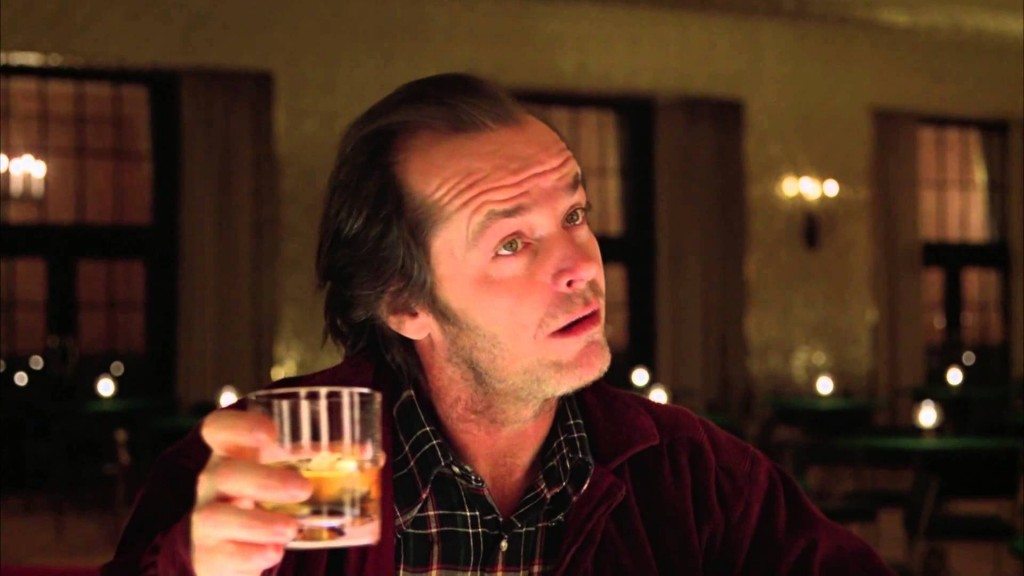
“Alcoholism is a well documented pathological reaction to unresolved grief. “ – David Cook.
Stanley Kubrick‘s ‘The Shining’ generates little sympathy for its tragic hero. There are moments when we are given permission to feel alarmed by his deteriorating state, but that’s pretty much it. Though the movie has an infinite number of metaphors and explanations, let’s just consider what happens on the screen is real and that Jack does drink the “hair of the dog that bit him” and, as a result, bellows a bad rendition of Danny Boy in the hallway. Though isolation drives Jack mad, the deprivation of his elixir acts as a strong catalyst, and we see a person who had assured himself to have been freed from the shackles of alcoholism fall victim to his past.
5. Frailty (Religious Fanaticism)
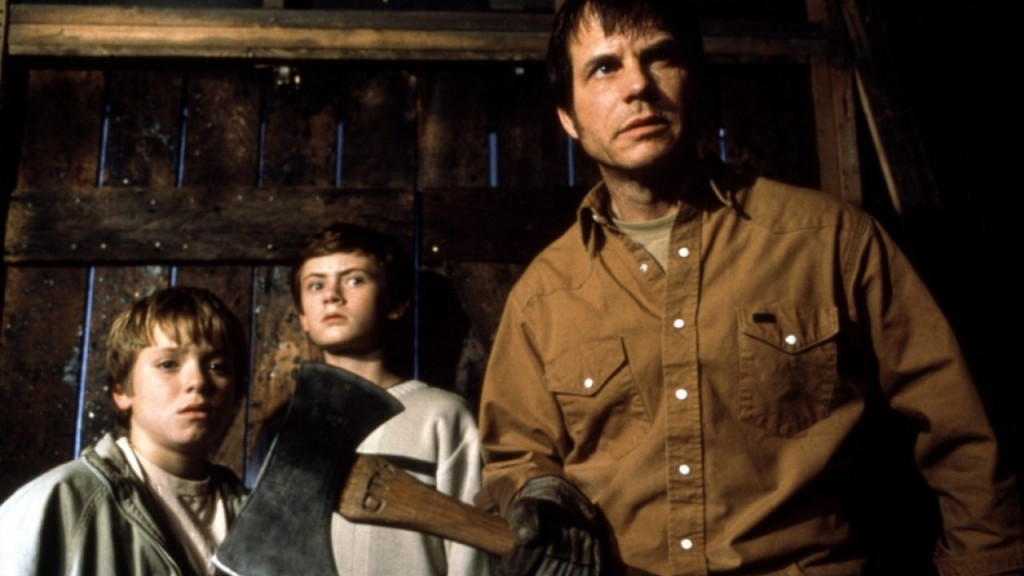
‘Frailty’ is a brilliant thriller, a very underrated one in fact. In Bill Paxton’s Frailty, religious fanaticism is given an unbelievable twist and if it wasn’t for the righteous elder brother, we would have had a serial killer family and probably the Warren County Axe Massacre or something (*sigh*). Paxton’s character has visions from God demanding him to kill demons (humans who had committed unspeakable crimes) and the movie’s nihilistic plot is so frightening, with the end embracing the existence of the murderer and his horrifying job under the facade of a happy ending. This is a movie that wholeheartedly accepts such obsessions to present their horrific effects to you, and let’s be honest, this is exactly how those mad cults begin. What’s more hard to accept is the innocence shown by the younger brother who follows his father, because that’s what children do, try to emulate their parents.
Read More: Best Violent Movies of All Time
4. Nosferatu, The Vampyre (The Plague)

Though there are simply no comparisons one can make with F.W.Murnau’s ‘Nosferatu’, Herzog’s version quite gallantly pays it a haunting tribute and in this process outdoes the original at one point, the arc(ark) of the Plague. Harboring a phobia for rats, Herzog’s visuals of thousands of white rats infesting the gloomily lit, joyless streets of Wismar are very unnerving and balance so well with the ghastly lifelessness of Count Dracula himself. The plague sweeps through the city, and the mise en scène also works as a great distraction from another plague spreading, that of the gluttony of blood. It’s also interesting to see someone who death has parted ways with, bring along the very reason for the end of hundreds of lives with him.
Read More: Best Drug Movies of All Time
3. American Psycho (Psychosis and Depersonalization)
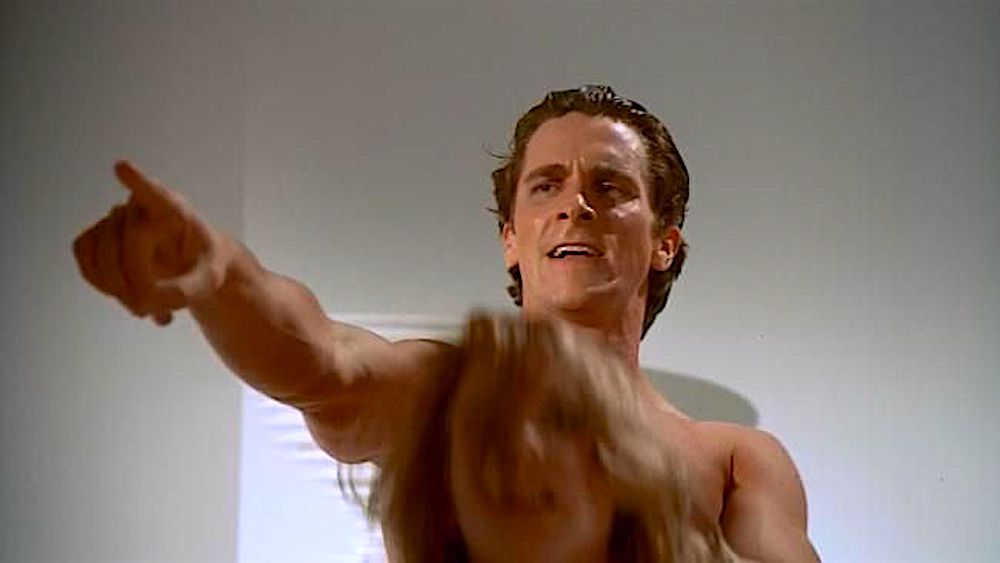
‘American Psycho’ is, according to me, the most interesting character study of this century. Maybe, it’s also because I love Bret Easton Ellis’s source material, but as an adaptation, Christian Bale does a marvelous job in shedding the numerous skins Patrick Bateman flaunts. His condition is of extreme nature, as his psychosis makes him lose touch with reality while his depersonalization Robinson Crusoes him in his own body, which traps his mind in a reverie in infinite space, untouched by the presence of his and others’ flesh. To add to his struggle, he’s conscious of his condition, and we see him pleading for catharsis through his non-directed 4th wall interactions. His turmoil is finally exposed in that conversation with his lawyer, where he even reveals incidents of cannibalism.
Read More: Best Psychopath Movies of All Time
2. Texas Chainsaw Massacre (Intellectual Disability)

Most serial killers like Michael Myers, Hannibal Lecter, Patrick Bateman, or John Doe, though having no solid motives except the intention to please themselves, are highly intelligent murderers, which provides them some sort of unparalleled menace because these are people who’d craftily push their minds to the line, to kill. Leatherface is unique and though inspired from Ed Gein, doesn’t suffer from schizophrenia, rather a very underdeveloped intellectual capacity, also known as mental retardation. Growing up in a family of cannibals is a disconcerting thought and despite all his brute strength, he’s treated like a piece of rag by his brothers, who misuse his disability to differentiate between right and wrong.
Read More: Best Bipolar Disorder Movies
1. The Cabinet of Dr Caligari (Schizophrenia)

*SPOILER ALERT* In probably the first and greatest plot twist in the history of cinema, the protagonist of ‘The Cabinet of Dr Caligari’ turns out to be a schizophrenic, whose hallucinations formed the iconic expressionist horror setting of the movie. Since the movie came out before the surrealist movement, the visuals don’t comply with the dreamy and perennial flow of surreal images as observed in Bunuel’s works. It instead uses jagged and rough geometric imagery to point out the dangerous nature of the nightmare our character is stuck in. The build-up to this ambiguity doesn’t involve indications towards insanity, rather in a gothic tale we are presented with a strong social commentary that seems out-of-place and associates with realism, i.e, the finale.
Read More: Best Disease Movies

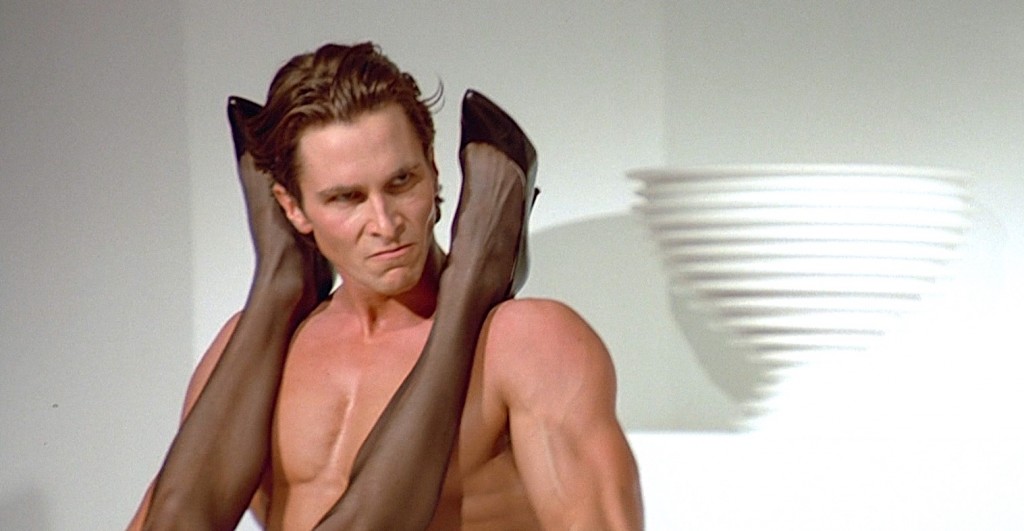
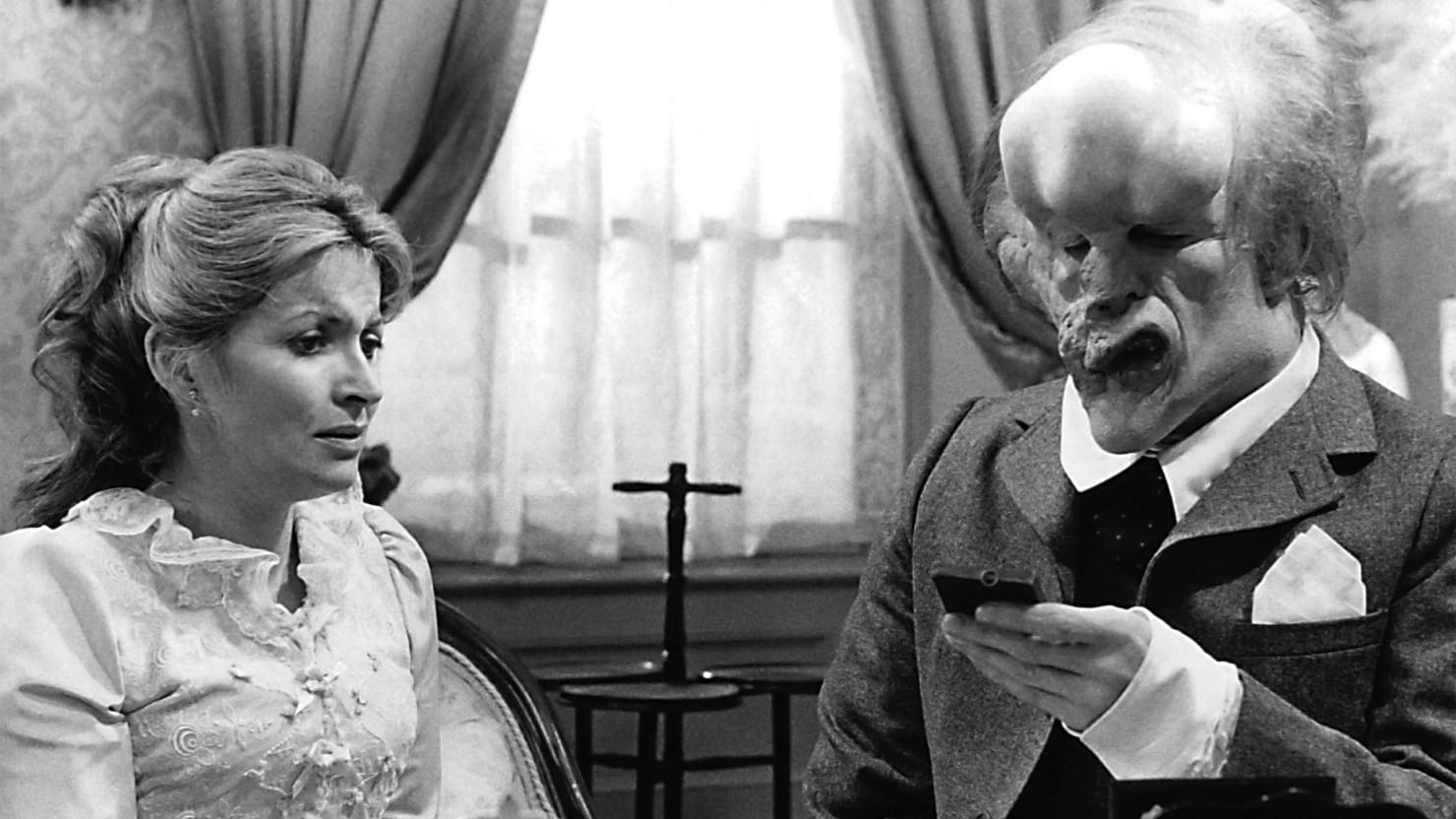
You must be logged in to post a comment.